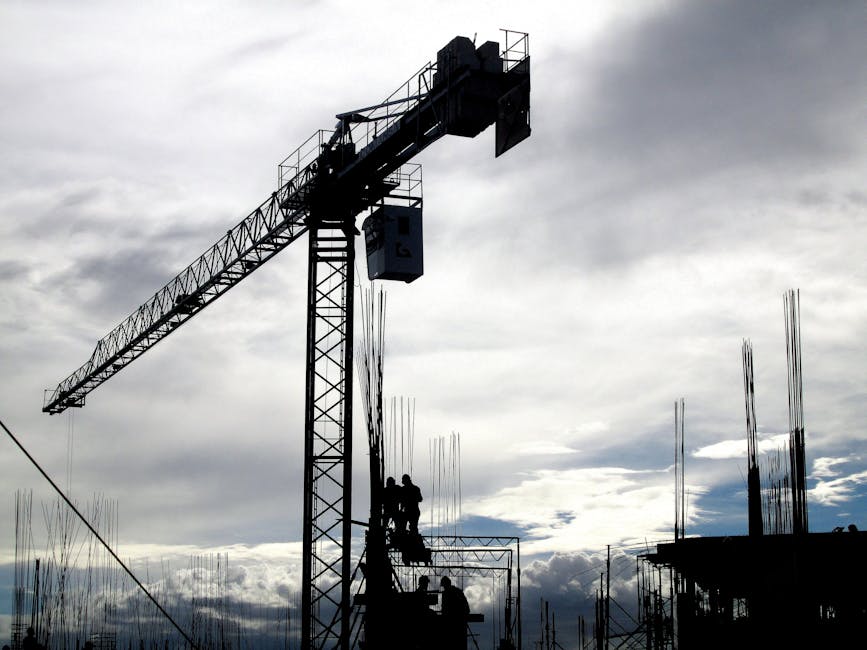Serverless architectures have revolutionized the way developers build and deploy applications. By abstracting away the underlying infrastructure, these frameworks allow developers to focus on writing code without having to worry about server management or provisioning. This shift not only accelerates the development process but also reduces operational costs and enhances scalability.
At the heart of many serverless applications lies event-driven design (EDD). This approach is all about responding to events, which can be anything from user interactions to data changes. In an event-driven system, components communicate by producing and consuming events, creating a loosely coupled architecture that can adapt to changing demands seamlessly. As we dive deeper into the role of event-driven design in modern serverless architectures, we’ll uncover how it enhances responsiveness, flexibility, and overall application performance.

Serverless computing is a paradigm shift in how we think about running applications and managing infrastructure. In this model, developers focus exclusively on writing code while the underlying server infrastructure, scaling, and management are handled by cloud providers. This approach allows for more agility and faster deployment, freeing developers from the complexities of server management.
Serverless frameworks, like AWS Lambda and Azure Functions, are at the forefront of this evolution. They provide an environment where functions—small pieces of code—can be executed in response to events without the need for dedicated servers. This not only simplifies the development process but also reduces costs, as you only pay for what you use.
When a developer uploads a function to a serverless platform, it can be automatically triggered by various events, such as HTTP requests, changes in data, or even scheduled tasks. These frameworks take care of provisioning resources, scaling up when demand increases, and scaling down during quiet periods, all transparently to the user.
In short, serverless frameworks are designed to streamline development and deployment, enabling teams to innovate faster without the burden of managing server infrastructure. This flexibility is a game-changer, especially when combined with event-driven design, which forms the backbone of interactions in modern applications.

Event-driven architecture (EDA) is a design paradigm centered around the production, detection, consumption, and reaction to events. At its core, EDA enables applications to react in real-time, making it a vital approach in modern software design, particularly within serverless frameworks.
Key Characteristics of EDA:
1. Asynchronicity: Unlike traditional synchronous processes, an event-driven system allows different components of an application to operate independently. This means that a component can trigger an event without having to wait for another to complete a task.
2. Responsiveness: Because components listen for events and can quickly react, EDA provides a way to build more dynamic and interactive applications. This is especially crucial for real-time processing where speed and efficiency are paramount.
3. Scalability: EDA systems can effortlessly scale horizontally. As events flow, additional consumers can be added to handle increased workloads without a hitch.
Key Components of EDA:
– Events: An event signifies a change in state or an action that has occurred, such as a new user signing up or an item being added to a shopping cart.
– Producers: These are the components or services that generate events. For example, a web application that records user actions serves as a producer by publishing events.
– Consumers: Consumers are the services that listen for events and act upon them. They process incoming events and may further trigger additional events or actions.
– Event Brokers: This is the middleware that facilitates communication between producers and consumers. Event brokers manage the flow of events, ensuring that consumers receive the events they are interested in. Popular tools in the event broker space include Apache Kafka, RabbitMQ, and AWS EventBridge.
By understanding these characteristics and components, developers can harness the power of event-driven architecture to build applications that are not only robust and flexible but also well-prepared for the demands of modern serverless environments. This foundation is essential for leveraging the full potential of serverless architectures, allowing applications to respond dynamically to events, thus enhancing user experiences and operational efficiencies.

Event-driven design (EDD) fundamentally transforms how applications interact and manage workflows. Here are some of the standout benefits:
One of the most significant advantages of adopting event-driven design is the decoupling it brings to system components. In a traditional architecture, changes in one service can necessitate lengthy modifications to others. However, in an event-driven model, services communicate through events rather than direct calls. This means that components can evolve independently. For instance, if you update a service that generates order notifications, other services listening for these notifications won’t need to change at all.
Scalability is a hallmark of any robust application, and event-driven systems deliver on this promise. When traffic spikes, event-driven architectures allow the backend to scale seamlessly; components can be instantiated or adjusted based on the volume of events being processed. This on-demand scalability minimizes resource waste, as you only utilize what you need when you need it. Coupled with serverless environments, this leads to a highly flexible system capable of adapting to changing loads without manual intervention.
In today’s fast-paced digital landscape, users expect applications to respond in real-time. Event-driven design excels in scenarios that require immediate feedback. When an event occurs—like a user clicking a button or a device sending telemetry data—systems can react instantaneously. This capability is crucial for applications in fields such as finance, gaming, or IoT, where real-time processing can define user experience and engagement. Moreover, with the enhancement of serverless architectures, you can deploy and run code in response to events, ensuring rapid response times with minimal latency.
In short, event-driven design not only promotes a more modular and resilient architecture but also enables applications to be more adaptive, scalable, and responsive to user needs and operational demands. As you delve into modern serverless architectures, leveraging these advantages will be essential for creating high-performance, future-proof solutions.

Event-driven systems often leverage specific design patterns that optimize their capabilities, making them more efficient and resilient. Here are three of the most common patterns:
In event sourcing, the state of an application is determined by a sequence of events rather than being just a snapshot of its current state. Instead of storing just the current state in a database, an event store captures all changes as discrete events. This way, you can reconstruct the entire state at any point by replaying the events. It also facilitates auditing and debugging since you have a complete history of all changes.
CQRS separates the read and write operations in a system. This pattern improves performance and scalability by allowing systems to be optimized for either command (write) operations or query (read) operations without compromising the effectiveness of the other. In an event-driven context, commands can trigger events that change the state, while queries can listen for those events to update views or materialized views efficiently.
The publish-subscribe pattern is fundamental to event-driven architecture. In this model, message producers (publishers) send messages to a topic without needing to know who (or if anyone) is listening for those messages. The consumers (subscribers) listen for specific messages, enabling a high level of decoupling. This pattern allows new functionalities to be added without modifying existing systems, facilitating growth and adaptability in dynamic environments.
These patterns not only enhance the modularity and responsiveness of applications but also play a crucial role in supporting the agility that serverless architectures seek to provide. By integrating these design patterns, developers can build systems that effectively manage complexity while remaining flexible enough to adapt to changing requirements.

Integrating event-driven design into serverless frameworks, such as AWS Lambda or Azure Functions, fundamentally transforms the operation of modern applications. Here’s how:
Example: A user uploading an image can instantly trigger a serverless function to process the file, which may include sending notifications or making additional changes on the fly.
Decoupling of Services:
Benefits:
Enhanced Scalability:
The integration of event-driven design with serverless architectures represents a significant advancement in application development. By leveraging events to trigger functions, applications gain:
This approach aligns seamlessly with the demands of modern development practices. If your goal is to create powerful and nimble applications, embracing this integration is a strategic move towards success.

Implementing event-driven systems within serverless architectures can be highly beneficial, but it’s not without its challenges. Developers often encounter issues that can lead to inefficiencies or even system failures if not addressed properly. Here’s a breakdown of common pitfalls and best practices to enhance the robustness and efficiency of your event-driven design.
Over-Engineering: It’s easy to get carried away with the capabilities of event-driven systems. In some cases, developers might create more events than necessary, complicating the architecture and leading to excessive overhead. Keep things simple—only produce events that serve a clear purpose.
Failure to Handle Exceptions: In a serverless environment, what happens when part of the system fails? Without proper error handling, events might get lost or processed incorrectly. This can cascade through your application, causing bigger issues down the line.
Siloed Event Producers and Consumers: If your producers and consumers aren’t well-aligned, you could find yourself with a number of unprocessed events. Ensuring that every event has a reliable consumer is key to maintaining system integrity.
Implement Retries and Dead-Letter Queues: One of the most effective strategies for handling failed events is to incorporate retries. These attempts should be configured with exponential backoff to minimize the impact on system resources. If retries fail after a set number of attempts, leverage dead-letter queues to store these problematic events for later analysis.
Adopt Solid Monitoring and Logging Strategies: Operational visibility is essential in event-driven systems. Set up comprehensive monitoring to track the flow of events and identify bottlenecks. Logging helps in diagnosing issues, but keep in mind that excessive logging can also lead to increased costs in serverless environments. Balance is key.
Embrace Schema Evolution: As your application evolves, so will the structure of your events. Plan for changes in event schemas by adopting versioning strategies and ensuring backward compatibility. This helps prevent disruptions in communication between producers and consumers.
Test for Scale: Don’t wait until your application is in full production mode to assess its performance. Regularly test how the system behaves under load and make adjustments as necessary to handle peak events without degradation of service.
By being aware of potential pitfalls and implementing these best practices, developers can create resilient event-driven systems that work seamlessly within serverless architectures. When approached thoughtfully, event-driven design can significantly enhance the functionality and agility of modern applications.

In today’s fast-paced digital landscape, understanding and leveraging event-driven design within serverless architectures is no longer just an option—it’s imperative. This approach not only enhances responsiveness and scalability but also fosters a more flexible and decoupled system environment. Through the integration of event-driven design, developers can build applications that respond dynamically to user interactions and system events, leading to better user experiences and more efficient resource utilization.
As we’ve explored, the synergy between event-driven principles and serverless frameworks like AWS Lambda and Azure Functions opens up a world of possibilities, allowing for the creation of next-gen applications that can automatically scale with demand. However, it’s crucial to navigate the inherent challenges that come with event-driven design, such as managing state and ensuring reliable event processing.
Moving forward, we encourage developers, architects, and even decision-makers to dive into the principles of event-driven design. By embracing these concepts, you’ll not only streamline your workflows but also future-proof your applications. The landscape of technology is constantly evolving, and integrating event-driven methodologies today can set the stage for your success tomorrow. So, get out there and start building—your innovative serverless application awaits!